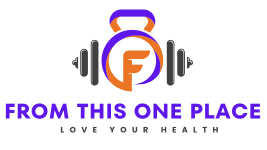Do you ever experience shoulder and collarbone pain when doing front squats? It can be quite frustrating and uncomfortable, especially if you’re trying to build strength and improve your lower body. But don’t worry, in this article, we’ll dive into why front squats can cause shoulder and collarbone pain and, more importantly, how you can relieve it and continue with your workout routine pain-free.
Front squats are an effective exercise for targeting the quadriceps, glutes, and core muscles. However, the way the barbell is positioned in front of your body can put a significant amount of stress on your shoulders and collarbone.
This can result in discomfort and pain, making it difficult to perform the exercise properly. But, fear not, because we have some tips and techniques that will help you alleviate this pain and allow you to fully benefit from front squats.
In the following paragraphs, we’ll cover different strategies such as adjusting your grip, using supportive equipment, and focusing on proper form. So, keep reading to discover how you can overcome shoulder and collarbone pain during front squats and continue on your fitness journey with ease.

Understanding the Causes of Shoulder and Collarbone Pain During Front Squats
Front squats are an effective lower body exercise that targets the quadriceps, hamstrings, and glutes. However, many individuals experience shoulder and collarbone pain when performing this exercise. Understanding the causes of this pain is crucial in order to find effective solutions and prevent further discomfort. Let’s explore the three common causes of shoulder and collarbone pain during front squats.
Improper Bar Placement
One of the main causes of shoulder and collarbone pain during front squats is improper bar placement. Placing the bar too high on your shoulders, close to the neck, can cause excessive pressure on the collarbone, leading to discomfort and pain. On the other hand, positioning the bar too low on the shoulders can strain the wrists and put unnecessary stress on the shoulders.
Lack of Shoulder Mobility
Another factor that contributes to shoulder and collarbone pain during front squats is a lack of shoulder mobility. Limited range of motion in the shoulders can make it difficult to properly position the barbell, causing discomfort and pain. Tight chest and front shoulder muscles can exacerbate this issue, restricting the movement necessary for a correct front squat position.
Weak Upper Back Muscles
Weak upper back muscles can also contribute to shoulder and collarbone pain during front squats. When the muscles in the upper back, such as the rhomboids and trapezius, are weak, they are unable to properly support the barbell. This can lead to increased pressure on the shoulders and collarbone, resulting in pain and discomfort.
Proper Bar Placement to Relieve Shoulder and Collarbone Pain
To alleviate shoulder and collarbone pain during front squats, it is important to focus on proper bar placement. By positioning the bar correctly, you can distribute the weight more efficiently and reduce the strain on your shoulders. Here are two techniques to achieve proper bar placement:
Position the Barbell on Your Clavicles
Place the barbell on your clavicles, just below the base of your neck. This ensures that the weight is centered and supported by the muscles in your upper chest, rather than resting directly on your collarbone. By keeping a firm grip on the bar and lifting your elbows high, you create a stable platform for the bar to rest on, reducing the risk of discomfort.
Rest the Barbell on Your Deltoids
An alternative bar placement is to rest the barbell on your deltoids, the shoulder muscles. This method requires exceptional shoulder mobility and flexibility, so it may not be suitable for everyone. However, if you have the necessary range of motion, resting the bar on your deltoids can alleviate pressure on the collarbone and provide a more comfortable positioning for the front squat.

Enhancing Shoulder Mobility for Front Squats
Improving shoulder mobility can significantly contribute to reducing shoulder and collarbone pain during front squats. By increasing the range of motion in your shoulders, you can achieve a more comfortable and efficient bar placement. Here are two methods to enhance shoulder mobility:
Perform Shoulder Mobility Exercises
Incorporate shoulder mobility exercises into your warm-up routine or as a separate workout session to increase flexibility and range of motion. Exercises such as shoulder dislocates, wall slides, and band pull-aparts can help mobilize the shoulder joints and improve your ability to perform a proper front squat.
Stretch Your Chest and Front Shoulders
Stretching the chest and front shoulder muscles is just as important as performing mobility exercises. Tightness in these muscle groups can restrict the movement of your shoulders, making it difficult to achieve proper bar placement during front squats. Incorporating stretches like doorway stretches, behind-the-back stretches, and pec stretches can help alleviate tightness and improve shoulder mobility.
Strengthening Upper Back Muscles to Reduce Shoulder and Collarbone Pain
Weak upper back muscles can contribute to shoulder and collarbone pain during front squats. Strengthening these muscles is crucial to provide better support for the barbell and alleviate strain on the shoulders. Here are two exercises to strengthen your upper back:
Incorporate Rows and Pull-ups into Your Training
Rows and pull-ups are excellent exercises that target the muscles in the upper back, such as the rhomboids and trapezius. Including these exercises in your training routine can help improve the strength and stability of your upper back, enabling you to better support the barbell during front squats.
Focus on Scapular Retraction Exercises
Scapular retraction exercises specifically target the muscles responsible for moving and stabilizing the shoulder blades. Strengthening these muscles can improve your ability to maintain proper form during front squats, reducing the risk of shoulder and collarbone pain. Exercises like scapular retractions, band pull-aparts, and face pulls can help strengthen the muscles involved in scapular retraction.

Maintaining Proper Form During Front Squats to Avoid Pain
Maintaining proper form is crucial to prevent shoulder and collarbone pain during front squats. By following these two guidelines, you can ensure that your technique is correct and minimize the risk of discomfort:
Keep Your Elbows Up and Forward
During front squats, it is important to keep your elbows lifted upwards and pointed forward. This helps to create a shelf for the barbell and takes some of the pressure off your shoulders and collarbone. By focusing on keeping your elbows up and forward, you can maintain a more upright torso position and reduce the strain on your upper body.
Maintain an Upright Torso Position
Keeping your torso upright throughout the movement is essential for avoiding shoulder and collarbone pain. Leaning too far forward can put excessive stress on the shoulders and collarbone, leading to discomfort. Focus on engaging your core and maintaining proper alignment to ensure that your torso stays upright during front squats.
Utilizing Equipment and Accessories to Alleviate Shoulder and Collarbone Pain
In addition to proper form and technique, utilizing equipment and accessories can provide additional support and alleviate shoulder and collarbone pain during front squats. Here are two options to consider:
Use Padded Barbell Wraps or Squat Pads
Using padded barbell wraps or squat pads can help distribute the weight more evenly and reduce the pressure on your shoulders and collarbone. These accessories provide a cushioned surface for the barbell to rest on, improving comfort during front squats.
Try Using Olympic Lifting Straps
Olympic lifting straps can also be beneficial for individuals experiencing shoulder and collarbone pain during front squats. By using these straps to hold the barbell, you can reduce the strain on your wrists and shoulders, allowing for a more comfortable and pain-free experience.

Listening to Your Body and Making Adjustments
Listening to your body and making necessary adjustments is essential for preventing and managing shoulder and collarbone pain during front squats. Here are two key considerations to keep in mind:
Gradually Increase Front Squat Intensity and Volume
Avoid rushing into heavy front squat training without allowing your body to adapt. Gradually increase the intensity and volume of your front squats over time to give your muscles, joints, and connective tissues the chance to acclimate and strengthen. This approach can help reduce the risk of pain and injury.
Take Sufficient Rest and Recovery Days
Proper rest and recovery play a crucial role in preventing and managing shoulder and collarbone pain during front squats. Adequate rest days between training sessions allow your body to repair and rebuild, reducing the likelihood of overuse injuries and discomfort. Pay attention to any signs of excessive pain or discomfort and take the necessary rest days or modify your training accordingly.
Seeking Professional Guidance and Support
If you continue to experience shoulder and collarbone pain despite implementing the strategies mentioned above, it may be beneficial to seek professional guidance and support. Here are two options to consider:
Consult with a Qualified Coach or Trainer
A qualified coach or trainer can provide personalized guidance and ensure that you are performing front squats with proper form and technique. They can assess your mobility, identify any weaknesses or imbalances, and provide specific exercise modifications or adjustments to alleviate pain and discomfort.
Consider Physical Therapy or Massage Therapy
In some cases, shoulder and collarbone pain during front squats may be a result of underlying issues or imbalances that require more specialized intervention. Physical therapy can address any muscular imbalances, while massage therapy can help alleviate muscle tension and improve range of motion. Consulting with a physical therapist or licensed massage therapist can provide valuable insights and treatment options.

Precautions and Safety Measures
To ensure a safe and pain-free front squat experience, it is important to take the following precautions:
Warm-up Properly Before Front Squatting
Before engaging in any exercise, including front squats, it is crucial to warm up your muscles and prepare your body for the activity. Incorporate dynamic stretches and mobility exercises targeting the hips, knees, and shoulders to increase blood flow and flexibility. This helps to prevent injuries and improve overall performance.
Use Appropriate Weight and Progress Gradually
When performing front squats, it is important to use appropriate weight based on your strength and fitness level. Starting with lighter weights allows you to focus on proper form and technique, reducing the risk of strain and injury. As you become more comfortable and confident, gradually increase the weight in small increments to avoid excessive stress on your shoulders and collarbone.
Conclusion
Shoulder and collarbone pain during front squats can be frustrating and discouraging, but with proper knowledge and technique, it is possible to alleviate and prevent this discomfort. By understanding the causes of the pain, focusing on proper bar placement, enhancing shoulder mobility, strengthening the upper back muscles, maintaining proper form, utilizing equipment or accessories, listening to your body, seeking professional guidance if necessary, and taking necessary precautions, you can enjoy pain-free front squats and maximize the benefits of this effective exercise. Remember to prioritize safety, listen to your body, and make necessary adjustments to maintain a healthy and pain-free experience during your front squat training.




